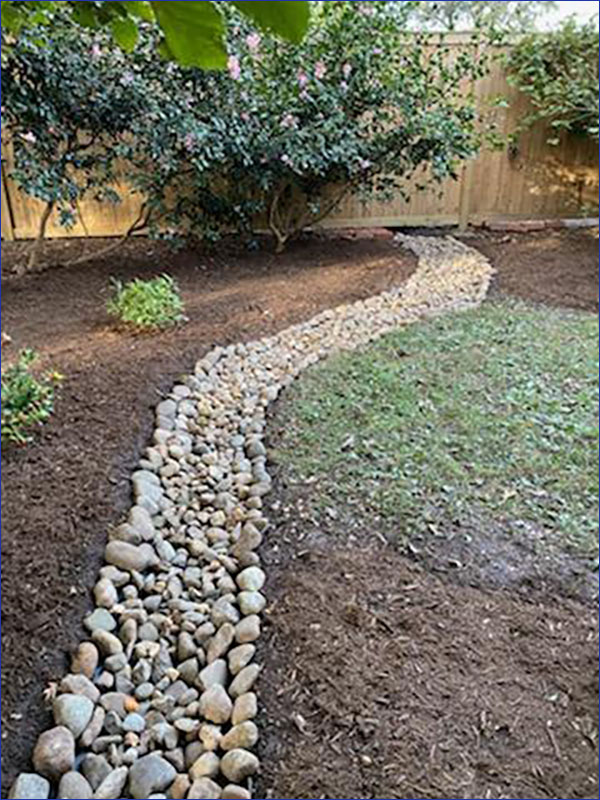Drainage Control
For homeowners who have hills on their property, they’re familiar with erosion, standing water and even basement flooding. Slope and gravity ensure water runs to its lowest point but there are methods of mitigation so you don’t have to “go with the flow.”

Planting shrubs on a hillside absorbs eroding water. Root balls can be large and filled with thirsty roots. But you will need to plant a good amount in a staggered fashion so running water is slowed and absorbed into the soil.

Retaining walls—either wood, stone or brick—serve as a blockade. For retaining walls, 6-inch by 6-inch, pressure-treated pinewood (ptp) is the smartest choice. These timbers are solid, heavy and have a “lifespan” of about 20 years. They stack well and are secured to one another with ½-inch-thick galvanized spikes either 8, 10 or 12 inches long. When building one of these on a hillside, install one of these 6 by 6s perpendicular to the wall every 10 feet along the run of the wall. This anchors the wall and prevents it from listing with age and gravity’s pull down the hill. PTP also comes in 4-inch by 4-inch cuts but these are better suited for a small patio where space is compromised.

Drainage beds (filled with rock, stone or gravel) act as large sponges in the landscape while preventing water from flowing downhill. These can be built in a serpentine line or teardrop shape so that they are decorative as well as functional. On landscapes with natural swales or depressions, I’ve created stone-filled drainage beds in their places which look like faux stream beds. When it rains or when there is a severe storm, water collects here and runs along like a stream. It’s smart to first weed the swale and spread landscape fabric before filling it in with rock or stone. This prevents weeds from manifesting. That said, you still have the maintenance of removing fallen leaves from the new rock bed.

In small patios where water might collect at a gate, it’s best to dig out and remove the compacted soil, which is clay-like. Once a cavity remains, fill it with River Stone or Pea Gravel. This new bed allows running or standing water to permeate down instead of allowing it to rush horizontally onto an attractive hardscape (brick or flagstone patio).

Faux Riverbed—This is the perfect touch if there’s a natural swale in the lawn. Provides a homemade “babbling brook.”
